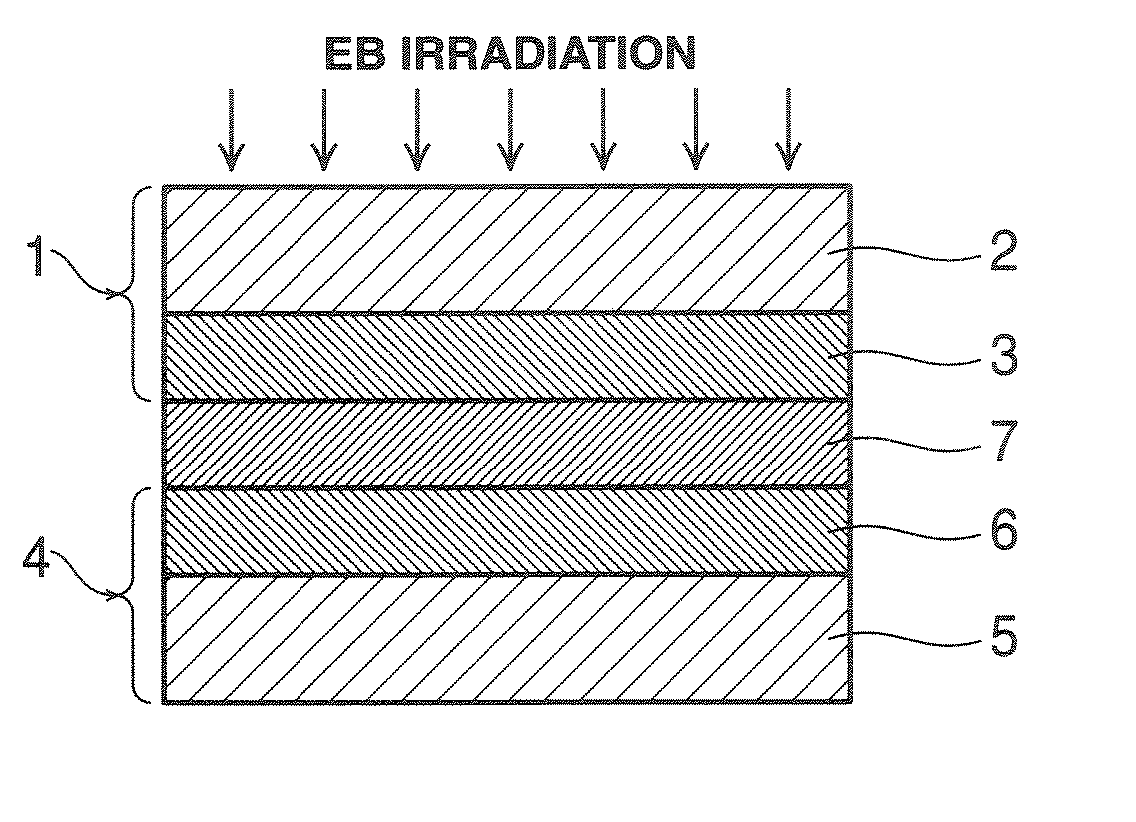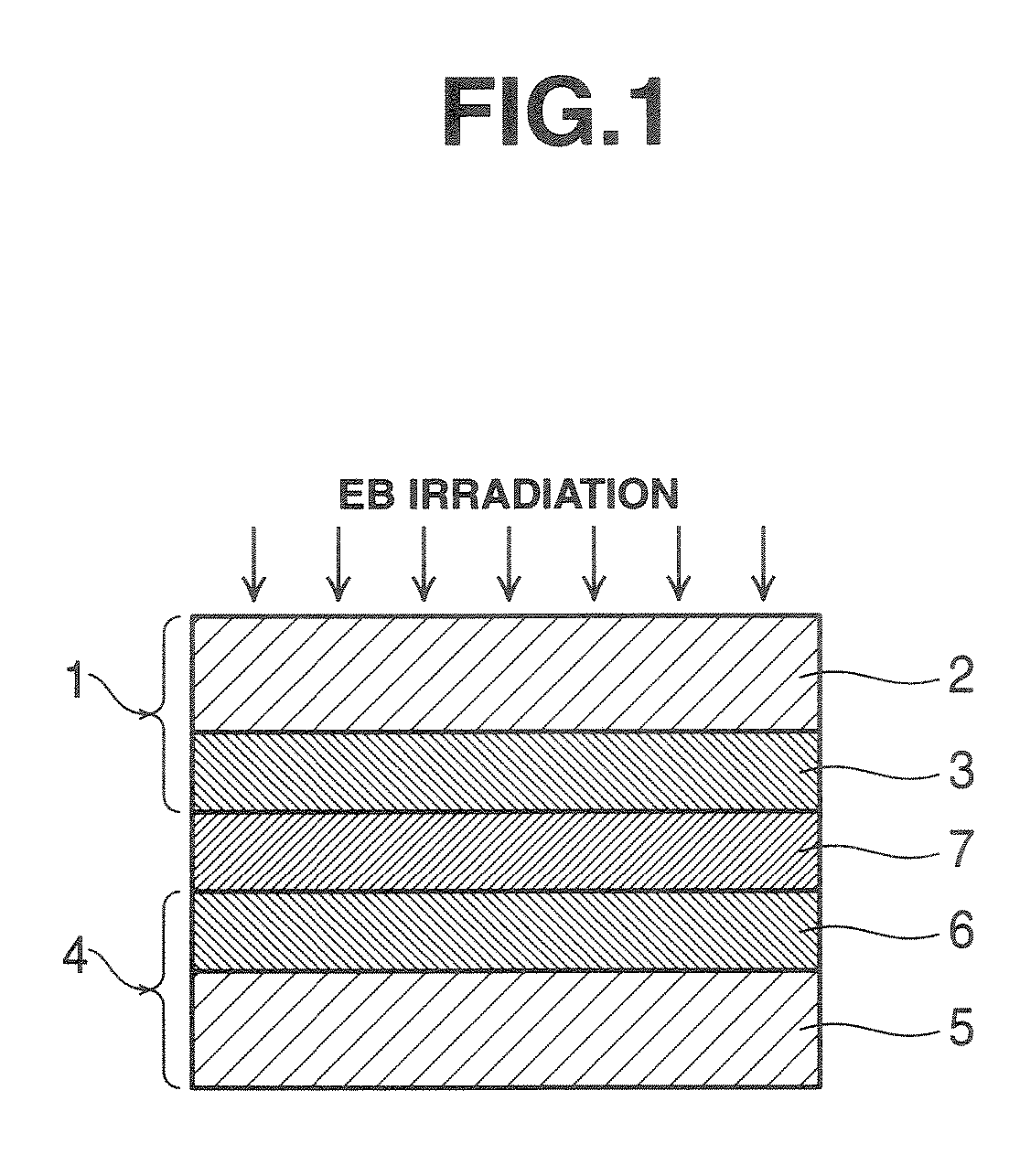Curable resin composition for fuel cell electrolyte film and electrolyte film, process for producing the same, electrolyte film/electrode assembly, and process for producing the same
a technology of curable resin and fuel cell electrolyte, which is applied in the direction of sustainable manufacturing/processing, conductors, and final product manufacture, etc., can solve the problems of reduced output, increased cost of fluororesin base electrolyte films as typified by nafion, and lack of practical usefulness of electrolyte films, etc., to achieve low methanol permeability, high ion conductivity, and film strength
- Summary
- Abstract
- Description
- Claims
- Application Information
AI Technical Summary
Benefits of technology
Problems solved by technology
Method used
Image
Examples
example 1
[0153] A reactor was charged with 100 g of fluorotetraethylene glycol having a Mn of 410 and 0.05 g of 2,6-di-tert-butylhydroxytoluene (BHT). In a nitrogen stream at 65-70° C., 84.9 g of 2,4-tolylene diisocyanate was added dropwise to the reactor. After the completion of dropwise addition, the reaction continued at 70° C. for a further 2 hours, followed by addition of 0.02 g of dibutyltin dilaurate. In dry air, 56.6 g of 2-hydroxyethyl acrylate was added dropwise. The reaction continued at 70° C. for a further 5 hours, yielding a fluoropolyether urethane acrylate oligomer having a Mn of 990 (Oligomer A).
[0154] 50 g of Oligomer A was mixed with 100 g of acrylamidemethylpropanesulfonic acid, 100 g of polyvinylidene fluoride (PVDF) powder having a Mn of 543,000, and 900 g of N,N-dimethylformamide (DMF) as a solvent to form a curable resin composition B of clear fluorescent color having a viscosity of 8,000 mpa-s at 25° C.
[0155] Next, using an applicator, the curable resin composition...
example 2
[0157] A 5% isopropyl alcohol solution of Nafion (Aldrich) and carbon having 20% by mass of platinum borne thereon, Vulcan XC-72 (Cabot) were kneaded to form a paste. Using a wire bar, this catalyst paste was applied onto a carbon paper TGP-H-090 (Toray Co., Ltd.) so as to give a coating weight of 0.34 mg / cm2 of Pt catalyst. The coating was dried in a hot air circulating dryer at 120° C. for 5 minutes, forming an electrode (fuel electrode).
[0158] Using an applicator, the curable resin composition B was applied onto this electrode to a buildup of about 30 μm. An electrode (air electrode) which was similarly constructed as the above electrode (fuel electrode) was laid on the coating. The laminate was press bonded by moving a roller at 5 kG / cm2 and room temperature over two back and forth strokes. Using an electron beam-emitting system, the laminate was irradiated, in the way illustrated in FIG. 1, with electron beams in a nitrogen atmosphere having an oxygen concentration of up to 50...
PUM
| Property | Measurement | Unit |
|---|---|---|
| operating temperature | aaaaa | aaaaa |
| viscosity | aaaaa | aaaaa |
| viscosity | aaaaa | aaaaa |
Abstract
Description
Claims
Application Information
 Login to View More
Login to View More - R&D
- Intellectual Property
- Life Sciences
- Materials
- Tech Scout
- Unparalleled Data Quality
- Higher Quality Content
- 60% Fewer Hallucinations
Browse by: Latest US Patents, China's latest patents, Technical Efficacy Thesaurus, Application Domain, Technology Topic, Popular Technical Reports.
© 2025 PatSnap. All rights reserved.Legal|Privacy policy|Modern Slavery Act Transparency Statement|Sitemap|About US| Contact US: help@patsnap.com


